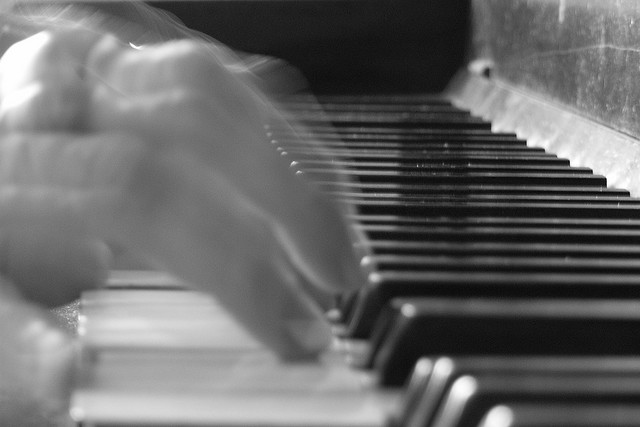Before a rehearsal for the next installment of his ongoing piano improvisation series, Neal Kosaly-Meyer explains what he’ll be doing: 20 minutes on the keyboard’s lowest A; seven minutes on an A and an E; 13 minutes on all eight A’s. It’s a condensed version of this Saturday’s performance at the Chapel Performance Space, where the same three-stage improvisation will last 60, 20, and 40 minutes. Using such radically stripped-down ingredients (yes, he’ll be playing one piano key for the first hour) naturally leads him to explore other aspects of the instrument’s sound world. Under Kosaly-Meyer’s hands, varieties of loudness, pedaling, and attack and release all have a strikingly large effect on the resulting sound—once you’re accustomed to hearing these details. A long silence near the start of his improvisation is what really resets my listening habits. When he begins playing again, I find my attention refocused, searching out the mini-rainbow of nuances in each note; in essence, this is a piece that teaches you how to listen to it.
Some of the A’s he plays are muffled, some choked off; some are bell-like or gong-like; some, struck particularly harshly, sound like a hammer hitting a wooden table. The decay of each note also varies widely, from a spacey drone to a grinding, metallic sort of buzz-shimmer, with infinite further color changes while dissipating like smoke. When he adds the E to the A, the mix of the two notes seems opulent, even intoxicating; all eight A’s are exponentially more so, like fireworks for the ear. Kosaly-Meyer has dubbed this performance series/long-term conceptual-art project Gradus: For Fux, Tesla, and Milo the Wrestler, in homage to the 18th-century music theorist, the inventor and engineer, and the athlete of ancient Greece—for him, “heroes of patient, systematic persistence.” He launched Gradus 12 years ago, and gives one or two performances a year in various venues. (Next year, he’s adding C-sharps!) His ability to draw fascination from the most circumscribed source material stands as an object lesson for all musicians. Suddenly, pieces that use more than this bare handful of notes seem wasteful—and, frankly, a crutch for the unimaginative. Chapel Performance Space, 4649 Sunnyside Ave. N. $5–$15. 8 p.m. Sat., Dec. 14.




